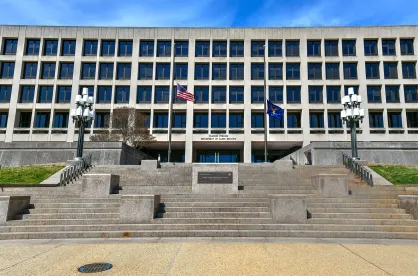In December 2022, Congress enacted the SECURE 2.0 Act as part of its efforts to encourage Americans to focus on savings, both for retirement and for emergencies. Two of the provisions of SECURE 2.0 – related to automatic portability programs that facilitate transfers between employers and for pension-linked emergency savings accounts (“PLESAs”) – are now the subject of Department of Labor guidance. This guidance provides employers some key insights into how these optional provisions will work in practice, and how employers can take advantage of these new features to benefit their employees.
PLESA FAQs
Defined contribution retirement plans can now allow non-highly-compensated employees to make after-tax Roth contributions to an emergency savings account within the retirement plan. The Department of Labor, Department of Treasury, and IRS have published frequently asked questions about this new optional plan feature, designed to benefit the many Americans who do not have emergency savings.
Eligibility and Participation
Employers who choose to offer PLESAs must make them available to employees who otherwise meet the retirement plan’s age, service, and other eligibility requirements. Employees can voluntarily contribute to a PLESA, or an employer may – after providing notice and an ability to opt out – automatically enroll its employees into its PLESA program and withhold up to 3% of employees’ compensation.
Plans cannot impose minimum contributions or minimum balance restrictions on PLESAs, but can adopt reasonable administrative practices, such as requiring that contributions be made in whole dollar amounts or whole percent of compensation increments.
Contributions
Contributions to a PLESA must be after-tax Roth contributions, and may not exceed $2,500 (as indexed for inflation). Contributions to a PLESA also count toward the 402(g) limit on elective deferrals ($23,000 for 2024). Plans can choose whether to include earnings on the $2,500 in the account limit.
For plans that provide a matching contribution, an employee’s PLESA contributions count towards the match at the same rate as non-PLESA elective deferrals, but the match must be allocated to the employee’s retirement savings account, not the PLESA.
Plans must separately account for PLESA contributions and earnings, and maintain separate recordkeeping with respect to each PLESA.
Distributions and Withdrawals
Participants do not need to demonstrate an emergency before withdrawing funds from a PLESA, and they can withdraw funds at least once per month. Plans cannot impose any fees or charges for the first four withdrawals of funds in any plan year, but may charge reasonable fees for subsequent withdrawals, including fees related to the incidental costs of handling of paper checks.
Administration and Investment
PLESA contributions must be held as cash, in an interest-bearing deposit account, or in an investment product designed to maintain the dollar value of the contributions. Because the goal of a PLESA is to provide immediate access to savings to respond to unexpected financial needs, investment products used may not contain liquidity restraints. This means that employers cannot rely on the plan’s qualified default investment alternative for PLESA contributions, but have to consider both the safety and the liquidity of how the PLESA is invested.
Plans must provide an annual notice to participants describing key features of the PLESA account, and the DOL anticipates requiring reporting regarding PLESAs on Form 5500 filings starting in 2024.
Automatic Portability Program Proposed Rule
When employees change employment, they often leave behind small retirement plan account balances that are automatically rolled over to a default IRA. These automatic rollovers can make it difficult for employees to keep track of their retirement benefits from their prior jobs. Automatic portability programs are designed to provide a way for an individual’s retirement funds to be automatically matched to their new employer’s plan, and rolled over from the IRA to the new plan.
The DOL has issued proposed regulations to implement a prohibited transaction exemption for these optional programs, which is intended to ease concerns about the potential fiduciary liability associated with these programs.
To qualify for the exemption, the Internal Revenue Code and the proposed regulation require automatic portability providers to:
- Acknowledge their fiduciary status and charge reasonable fees;
- Provide disclosures regarding the default IRA and provider’s fees, compensation, and services, including in summary plan descriptions or summaries of material modifications;
- Restrict the use of plan participant and IRA owner data to use in transactions or to find missing participants;
- Offer participation on the same terms for all eligible transfer-in plans;
- Invest transferred amounts in the participant’s current investment election or the plan’s qualified default investment alternative;
- Conduct at least monthly searches for transfer-in plan accounts;
- Timely execute automatic portability transactions and limit their discretion to affect the timing or amount of transfers; and
- Retain records demonstrating they are complying with the exemption conditions, conducting an annual audit, and maintaining a website with a list of participating recordkeepers and fees.
The regulations also bar automatic portability providers from receiving payments of third-party compensation (other than a direct fee paid by a plan sponsor which is in lieu of a fee imposed on an IRA owner), or otherwise disclaiming or limiting liability if an automatic portability transaction results in an improper transfer.
If an automatic portability provider does not comply with the new rules, the proposed regulations also provide for correction procedures, which may include a temporary prohibition from relying on the exemption.
Overall, both the PLESA FAQs and the automatic portability transaction proposed regulations provide valuable information to plan sponsors considering adding these features to their plans.
Erica A. Storm also contributed to this article.




 />i
/>i

